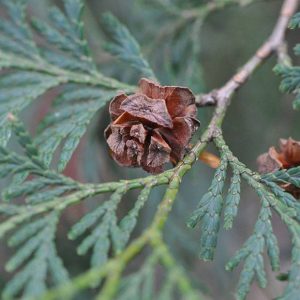- FREE SHIPPING IN CANADA ON ORDERS OF $100 OR MORE AT REGULAR PRICE. SOME EXCEPTIONS APPLY.
Shop
Essential oils
KHELLA, Ammi visnaga
Price range: $29.95 through $130.55
Latin name : Ammi visnaga
Distilled part: seeds
Origin : Morocco
Properties: antiallergic, anticoagulant, preventive antihistamine (prevents the degranulation of mast cells), antispasmodic, bronchodilator and coronary dilator
Indications: allergies, allergic rhinitis, hay fever, asthma, hepatic and renal colic, inflammatory colitis
Contraindications: None at physiological doses.
Our expert’s advice
AMMI VISNAGA (KHELLA), A FRIEND OF ASTHMATICS
The Ammi visnaga is a native plant of the lower Morocco, Egypt and Mediterranean rim. It’s an umbelliferous that looks a lot like wild carrot. Mentioned in the Ebers Papyrus, about 1.500 B.C., the visnaga Ammi was used by ancient Egyptians to treat kidney stones and nephretic colic.
The interest of this plant did not really appear until 1945, when Anrep, a pharmacologist working in Egypt, discovered the potent antispasmodic action of khellin at the level of the bronchi, the coronary arteries and the ureter, making it a choice remedy for asthma, angina pectoris and nephretic colic.
Unlike usual asthma medications, the antispasmodic effect of Ammi visnaga lasts for a relatively long time, averaging 6 hours. Another advantage is that it has a cumulative effect, called “khellinization”. Three daily doses distributed during the day and an additional dose at bedtime are sufficient to ensure good therapeutic control and to prevent nocturnal attacks.
Ammi visnaga also exerts anti-allergic action, stabilizing mast cells and preventing their degranulation and histamine release.
PROPERTIES
- Antispasmodic + + + +
- Coronodilatatrice + + + +
- Uretodilator + + + +
- Bronchodilator + + + +
- Calming + + +
- Analgesic + + +
- Anticoagulant + +
- Anti-inflammatory + + +
INDICATIONS
- Asthma
- Coronary artery failure/angina
- Nephretic and hepatic colic
- Kidney and liver stones
- Hay fever
- Allergic rhinitis
Examples of formulas
ASTHMA
Ammi visnaga 40% Artemisia Dracunculus 30% Tanacetum annuum 30%
Adult dosage:
- Rectal route: suppositories 250 mg H.E./suppositories. 1 suppository at bedtime + 1 suppository 3 X/day if necessary
- Oral (in case of crisis): 1 drop under the tongue, to be repeated in 5 minutes.
- Dermal: 5 drops at the wrist and solar plexus in the evening at bedtime. Repeat 3 times a day if necessary; in the event of a crisis repeat at 1/2 hours
Caution : do not separate from the inhaler as long as the
HEPATIC, INTESTINAL OR NEPHRETIC COLIC
Ammi visnaga 15% Artemisia Dracunculus 30% Chamaemelum Nobile 25% Citrus reticulata (Fe) 15% Cananga odorata 15%
Dosage
- Dermal: 5 to 10 drops of the mixture, in situ, “where it hurts”. Repeat every 1/2 hours until symptoms are improved
- Oral: 5 drops in 1/2 tsp. vegetable oil, every 15 minutes for 1 hour
ANGINA PECTORIS: Ammi visnaga 100%
Dosage
- Oral: 1 drop under the tongue at 5 minutes, until symptoms are improved
Beware, this does not exempt you from calling 911! And first of all, think about prevention!
Contraindications: photosensitizing. Avoid exposure to sunlight during the 8 hours following skin application.
Your Hunzaroma newsletter was written by: Maurice Nicole, ND. A, Institut d’aromatherapy scientifique inaroma.ca




